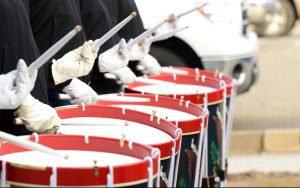Chapter 7 – Rhythm Skills

Beginning musicians are often taught to read rhythms by focusing on individual note durations: quarter notes, eighth notes, half notes, etc. There are good reasons for this, especially if one of our goals is to dive into notated music right away. But it also ignores an important fact about how we tend to listen to music: it’s more natural for our brains to focus on beats than on individual notes.
For this reason, aural skills rhythm pedagogy typically focuses instead on what we call “rhythmic cells,” or groups of durations that fill a beat (or other metrical unit such as a half measure). This helps students memorize and internalize the most common ways that beats are divided up in different meters—learning them as “chunks.”
Studying rhythm in this way helps us work with music more efficiently: instead of focusing on each duration in and of itself, we can recognize groups of durations holistically.
This is also easier and more musical for most people, because if we can track a beat, we can understand very quickly how these rhythmic cells fit together; whereas, if we focused on each note separately, we’d have to carefully figure out how each note relates to the meter in order to notate or perform it.
While these are all important reasons to focus on rhythmic cells, there will always be rhythms that are either unfamiliar or complicated enough that we haven’t yet internalized them. So we will also address the skill of “subdividing,” to make sure we’re able to work with any situation we are presented with.
Learning Objectives
Students will be able to:
- Use physical motions to track metric units (beats, cycles, etc.).
- Perform and identify common one-beat rhythmic cells in simple, compound, and mixed meter.
- Create and identify strings created with combinations of learned one-beat rhythmic cells.
- Use subdivision strategies to accurately perform more complex notated rhythms and identify more complex heard rhythms.
Image Attributions |
|

